Thursday, November 7th 2019

AMD Announces Ryzen 9 3950X, Details 3rd Gen Ryzen Threadripper, unlocked Athlon 3000G
AMD today announced four new desktop processors across three very diverse markets. To begin with, the company crowned its socket AM4 mainstream desktop platform with the mighty new Ryzen 9 3950X processor. Next up, it released its new baseline entry-level APU, the Athlon 3000G. Lastly, it detailed the 3rd generation Ryzen Threadripper HEDT processor family with two initial models, the Ryzen Threadripper 3960X and the flagship Ryzen Threadripper 3970X. The company also formally released its AGESA Combo PI 1.0.0.4B microcode, and with it, introduced a killer new feature for all "Zen 2" based Ryzen processors, called ECO Mode.
The Ryzen 9 3950X is a 16-core/32-thread processor in the AM4 package, compatible with all socket AM4 motherboards, provided they have the latest BIOS update with AGESA Combo PI 1.0.0.4B microcode. The processor comes with clock-speeds of 3.50 GHz base, with 4.70 GHz maximum boost frequency, and the same 105 W TDP as the 12-core Ryzen 9 3900X. With 512 KB of dedicated L2 cache per core, and 64 MB of shared L3 cache, the chip has a mammoth 72 MB of "total cache."According to performance numbers put out by AMD, the Ryzen 9 3950X offers up to 22 percent higher single-threaded performance than the Ryzen 7 2700X as tested in Cinebench R20, and a whopping 79 percent higher multi-threaded performance than the Core i9-9900K. The company also claims gaming performance parity with the i9-9900K. The company also claims huge performance-per-Watt gains over the i9-9900K. Available for purchase from November 25, 2019, the Ryzen 9 3950X is priced at USD $749 (MSRP). The retail PIB box package lacks a cooling solution, and AMD recommends at least a 240 mm x 140 mm AIO liquid CPU cooler to go with this chip.AMD also sealed the bottom end of its socket AM4 processor lineup with the new Athlon 3000G, which adds a few segment-first features. The 3000G is based on the 12 nm "Picasso" silicon that combines CPU cores based on the "Zen+" microarchitecture with an iGPU based on the "Vega" graphics architecture. The 3000G is configured with a 2-core/4-thread CPU and the Radeon Vega 3 onboard graphics that has 3 "Vega" NGCUs. The CPU is clocked at 3.50 GHz, which is a 300 MHz gain over the Athlon 200GE. This time around, AMD has also provided an unlocked base-clock multiplier for the CPU, letting you overclock it. The Radeon Vega 3 iGPU is configured with 192 stream processors, and 1100 MHz engine clock, a 100 MHz gain over that of the 200GE. Available for purchase from November 19, 2019, the Athlon 3000G is priced at just USD $49, and could make for an entertaining little toy for enthusiasts, as well as a formidable chip for home-theater, NAS, or other low-power desktop builds.Moving on to the most exciting part of the day's announcements, AMD unveiled its 3rd generation Ryzen Threadripper high-end desktop (HEDT) processor series, debuting with two models, the Threadripper 3960X and the Threadripper 3970X. The two are based on the new sTRX4 CPU socket, and are being launched alongside the new AMD TRX40 chipset. The socket itself looks physically similar to the older TR4 socket, and offers cooler compatibility, meaning that any CPU cooler or water-block that's compatible with TR4 will be compatible with sTRX4 as well. Your only consideration should be the cooler's thermal load capacity, as both the processors being announced today have a TDP rating of 280 W. The 3rd gen Ryzen processors themselves have no backwards-compatibility with older AMD X399 chipset motherboards, nor would older Threadrippers work on TRX40 chipset motherboards.As for the processors themselves, the Ryzen Threadripper 3960X is a 24-core/48-thread beast priced at USD $1,399 (same exact price as the previous generation 24-core Threadripper 2970WX). The 3960X offers frequencies of 3.80 GHz base with up 4.50 GHz maximum boost, and a gargantuan 140 MB total cache (L2+L3). The Threadripper 3970X, on the other hand, is a 32-core/64-thread monstrosity priced at USD $1,999. Despite its extreme core-count, it doesn't skimp on clock-speeds, offering 3.70 GHz nominal clocks, and 4.50 GHz maximum boost frequency. Both chips will be available to purchase on November 25, 2019.
Interestingly, AMD has launched no HEDT chips priced under $1000 this time around, which is where Intel retreated its 10th generation Core X lineup to. AMD says that its 2nd generation Ryzen Threadripper chips are still competitive with Intel's HEDT chips, and suggested that consumers to pick up those chips instead. We interpret this as AMD preparing a round of price-cuts to 2nd gen Threadrippers already in the market, and possibly getting its motherboard partners to do the same with their X399 motherboards.
The 3rd generation Ryzen Threadripper is a derivative of the company's "Rome" multi-chip module, featuring five chips - four 7 nm "Zen 2" 8-core CPU chiplets (or CCDs), and one 14 nm I/O Controller die (or ICOD). The four CCDs talk to the ICOD over the Infinity Fabric interconnect, which has doubled in bandwidth over the previous generation. The ICOD on the sTRX4 Threadrippers are configured with a monolithic quad-channel DDR4 memory interface that supports up to 2 TB of memory, including ECC support.The PCI-Express root-complex of the 3rd generation Ryzen Threadripper is massive, and fascinating. It puts out a total of 64 PCI-Express gen 4.0 lanes, wired out as follows:
The AMD TRX40 chipset is physically similar to the X570 and is designed in-house by AMD for GlobalFoundries 12 nm FinFET node. Its PCI-Express gen 4.0 switch is configured differently to accommodate the wider x8 chipset-bus. The TRX40's PCIe budget is laid out as follows.
The entire slide-deck follows.
The Ryzen 9 3950X is a 16-core/32-thread processor in the AM4 package, compatible with all socket AM4 motherboards, provided they have the latest BIOS update with AGESA Combo PI 1.0.0.4B microcode. The processor comes with clock-speeds of 3.50 GHz base, with 4.70 GHz maximum boost frequency, and the same 105 W TDP as the 12-core Ryzen 9 3900X. With 512 KB of dedicated L2 cache per core, and 64 MB of shared L3 cache, the chip has a mammoth 72 MB of "total cache."According to performance numbers put out by AMD, the Ryzen 9 3950X offers up to 22 percent higher single-threaded performance than the Ryzen 7 2700X as tested in Cinebench R20, and a whopping 79 percent higher multi-threaded performance than the Core i9-9900K. The company also claims gaming performance parity with the i9-9900K. The company also claims huge performance-per-Watt gains over the i9-9900K. Available for purchase from November 25, 2019, the Ryzen 9 3950X is priced at USD $749 (MSRP). The retail PIB box package lacks a cooling solution, and AMD recommends at least a 240 mm x 140 mm AIO liquid CPU cooler to go with this chip.AMD also sealed the bottom end of its socket AM4 processor lineup with the new Athlon 3000G, which adds a few segment-first features. The 3000G is based on the 12 nm "Picasso" silicon that combines CPU cores based on the "Zen+" microarchitecture with an iGPU based on the "Vega" graphics architecture. The 3000G is configured with a 2-core/4-thread CPU and the Radeon Vega 3 onboard graphics that has 3 "Vega" NGCUs. The CPU is clocked at 3.50 GHz, which is a 300 MHz gain over the Athlon 200GE. This time around, AMD has also provided an unlocked base-clock multiplier for the CPU, letting you overclock it. The Radeon Vega 3 iGPU is configured with 192 stream processors, and 1100 MHz engine clock, a 100 MHz gain over that of the 200GE. Available for purchase from November 19, 2019, the Athlon 3000G is priced at just USD $49, and could make for an entertaining little toy for enthusiasts, as well as a formidable chip for home-theater, NAS, or other low-power desktop builds.Moving on to the most exciting part of the day's announcements, AMD unveiled its 3rd generation Ryzen Threadripper high-end desktop (HEDT) processor series, debuting with two models, the Threadripper 3960X and the Threadripper 3970X. The two are based on the new sTRX4 CPU socket, and are being launched alongside the new AMD TRX40 chipset. The socket itself looks physically similar to the older TR4 socket, and offers cooler compatibility, meaning that any CPU cooler or water-block that's compatible with TR4 will be compatible with sTRX4 as well. Your only consideration should be the cooler's thermal load capacity, as both the processors being announced today have a TDP rating of 280 W. The 3rd gen Ryzen processors themselves have no backwards-compatibility with older AMD X399 chipset motherboards, nor would older Threadrippers work on TRX40 chipset motherboards.As for the processors themselves, the Ryzen Threadripper 3960X is a 24-core/48-thread beast priced at USD $1,399 (same exact price as the previous generation 24-core Threadripper 2970WX). The 3960X offers frequencies of 3.80 GHz base with up 4.50 GHz maximum boost, and a gargantuan 140 MB total cache (L2+L3). The Threadripper 3970X, on the other hand, is a 32-core/64-thread monstrosity priced at USD $1,999. Despite its extreme core-count, it doesn't skimp on clock-speeds, offering 3.70 GHz nominal clocks, and 4.50 GHz maximum boost frequency. Both chips will be available to purchase on November 25, 2019.
Interestingly, AMD has launched no HEDT chips priced under $1000 this time around, which is where Intel retreated its 10th generation Core X lineup to. AMD says that its 2nd generation Ryzen Threadripper chips are still competitive with Intel's HEDT chips, and suggested that consumers to pick up those chips instead. We interpret this as AMD preparing a round of price-cuts to 2nd gen Threadrippers already in the market, and possibly getting its motherboard partners to do the same with their X399 motherboards.
The 3rd generation Ryzen Threadripper is a derivative of the company's "Rome" multi-chip module, featuring five chips - four 7 nm "Zen 2" 8-core CPU chiplets (or CCDs), and one 14 nm I/O Controller die (or ICOD). The four CCDs talk to the ICOD over the Infinity Fabric interconnect, which has doubled in bandwidth over the previous generation. The ICOD on the sTRX4 Threadrippers are configured with a monolithic quad-channel DDR4 memory interface that supports up to 2 TB of memory, including ECC support.The PCI-Express root-complex of the 3rd generation Ryzen Threadripper is massive, and fascinating. It puts out a total of 64 PCI-Express gen 4.0 lanes, wired out as follows:
- 48 lanes toward PCI-Express x16 slots (x16/x16/x16), which can be further segmented two x8 slots, each
- 8 lanes toward chipset-bus. That's right, AMD is using an extra-wide PCI-Express 4.0 x8 pipe between the CPU and the TRX40 chipset
- 8 general purpose lanes, either configured as two M.2 NVMe slots with x4 wiring, each, or as x4 motherboard slots, or even additional SATA ports
The AMD TRX40 chipset is physically similar to the X570 and is designed in-house by AMD for GlobalFoundries 12 nm FinFET node. Its PCI-Express gen 4.0 switch is configured differently to accommodate the wider x8 chipset-bus. The TRX40's PCIe budget is laid out as follows.
- 8 lanes toward chipset-bus (this can't be changed)
- 8 general purpose lanes (for external onboard devices such as GbE or WLAN controllers, additional USB controllers, etc., or even wired out as slots)
- Bloc of 4 lanes configurable as four SATA 6 Gbps ports, general purpose lanes for slots, or an M.2/U.2 NVMe connection with x4 wiring
- A second such bloc of 4 lanes
The entire slide-deck follows.
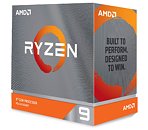
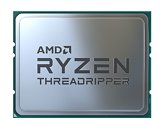
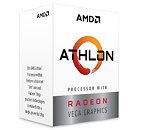
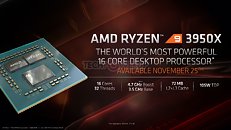
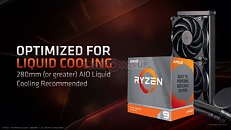
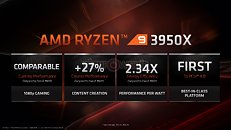
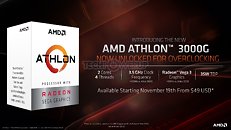
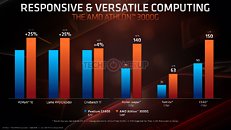
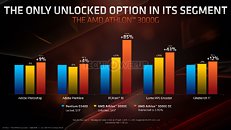
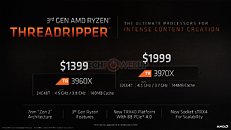
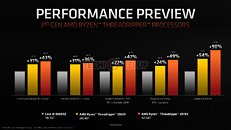
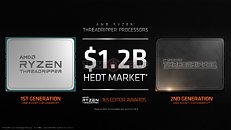
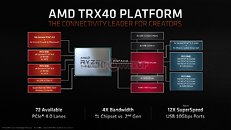
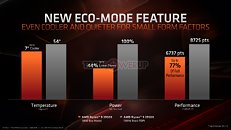
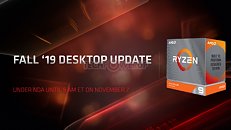
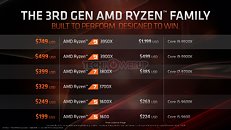
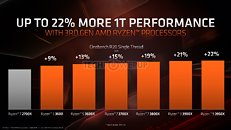
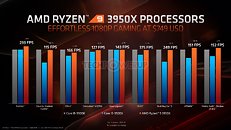
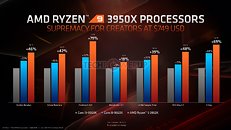
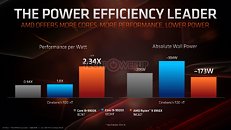
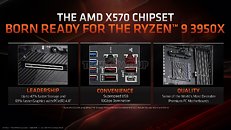
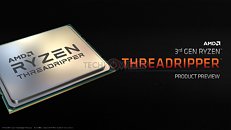
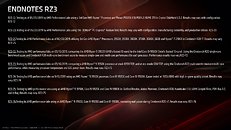

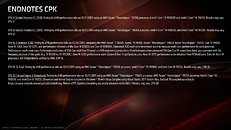

114 Comments on AMD Announces Ryzen 9 3950X, Details 3rd Gen Ryzen Threadripper, unlocked Athlon 3000G
What's wrong with gaming on a quad? You should be more specific and include that you mean only the badest newest titled games. I have well over 100 games (not to mention emulation) that can easily game on as little as a dual core.....
God, I'm old.
I am still running my 1900X and it does everything I need it to but.. I'd like to move to the 2nd or 3rd Gen for better memory support.
Athalon 64 started at 199 for the 2800, up to 1000 for the fx-55, gpu to get was the 299 x800 pro or 6800gt, 1gb of ram was 200, motherboard expect to pay 100 for basic and 200 for any features.
I saw plenty of folks rocking athlon 64 3200/3400/3500/3800 and 4000, matter of fact that a64 3200 was the most common at 500 bucks. Pentium 4 same deal,people saved and bought it. It wasn't I got paid let's build a compter. It was save up for 6 months then build.Not quite am2 beat Intel by a few months, when the fx-62 came out it was declared the fastest processor. And phenom wasn't a total failure, just at the top end, but remember for the price of an e7300 you could get a phenom x3 8750, guess which one stayed useable longer.
Am2 had another advantage, my m2n-e will run a phenom II x4 980 just fine, launch Conroe boards had issues with 45nm chips. You needed a p35 to properly support them.
AM2 Phenom was AM2/+ and where part numbers 9850BE and 9950BE.
The DDR3 phenom II is a little bit later and youve got some time line mistakes there. No biggie.
FX-62 and FX-60 where just Athlons with a fancy name.
The Athlon 6400+ actually was faster and had THE lowest memory latency and actually for many years.
But even still the FX-62 was short lived as you mentioned.Most epeen you need now is big Gpu. I think 8 cores would be a good standard for a higher end gaming rig and 6 with SMT at least.
But we just starting nit picking at a certain point.
Think in general processors are plenty epeen nowadays.
Early 2006 and launched am2 (fx62, x2 5200)
Mid 2006 Intel launched Conroe
Late 2006 and launched x2 6000
Late 2006 ntel launched core 2 quad and the 6x50 series, amd responded with quad fx
Early 2007 x2 6400 hits market, ties core2 e6700 in most titles
Mid 2007 and launched phenom
Late 2007 Intel launched 45nm
Late 2007 and launched triple core cpu
Mid 2008 amd released fixed phenom
Late 2008 Intel launched core i7
Late 2008 Amd launched phenom ii
There you go.
Now as far as competition
Athlon x2 Kuma vs Pentium e6000
Phenom x3 vs core 2 e7000
Phenom x4 vs core 2 e8000 and q6000
Phenom ii vs q9000
However, if I were to the 3950X is high on my list. When I got the 5820k 6 years ago, the thinking was that 4C/4T was all you would need. Well, the 6C/12T 5820k still works well at higher resolutions today. With the same thinking, a CPU with a high core count should be able to keep your GPU feed for some time to come.
If you look at Epyc prices then Treadripper pricing makes more sense:
Epyc 7504P: 32C/64T 2.5 Ghz base/ 3.25 Ghz Boost $2300
Epyc 7402P: 24C/48T 2.8 Ghz base/3.35 Ghz Boost $1250
(the P versions are for single socket servers)
TR 3970X: 32C/64T 3.7 Ghz base/ 4.5 Ghz Boost $2000
TR 3960X: 24C/48T 3.8 Ghz base/ 4.5 Ghz Boost $1400
Notice that the Treadripper base clocks are higher than the boost clocks on Epyc.
I recall that "Extreme Edition" thing, which was slower than Athlon, but cost $1k.
But feel free to live in "Intel, the price dropper" imagination of yours.
That's why they make a whole line up of chips from the 3600-3950X to the TRs. I'll getting either the 3700X or 3800X and it's perfect for my use case. You can get something that matches your budget and it's still great product. It's like people complaining about the costs of a Ferrari when they can only afford a BMW.
The x6800 launched at 1000
So did the Pentium extreme 955 and 965
But facts seldom matter
Why do all of these people complain about the price on these new processor. Just buy a processor within your needs and budget. If you complain about the price, then it might not be within your target audience.
It's modern contrivance that CPUs should be under 300, it used to be 500-700 was more normal if building high performance. No one paired a 6800ultra or 7900gtx with an athlon 64 2800, they have spent more on the cpu. A budget system would have been a 6600gt or 7600gt with a mid tier cpu around 200 bucks
valid.x86.fr/rnsg7f